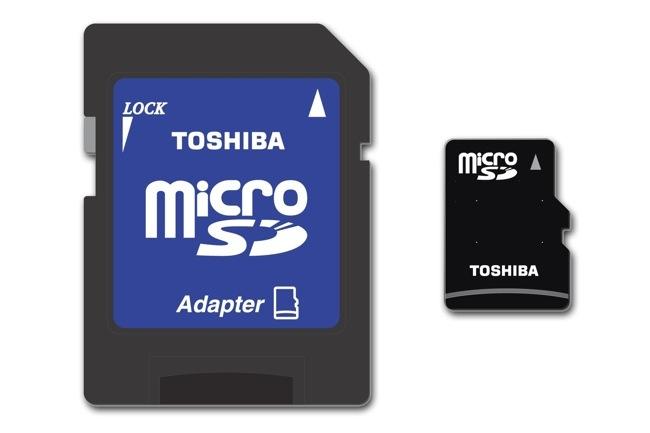
MicroSD cards have become so ubiquitous that even some digital cameras are now using it. That’s fine and dandy if speed isn’t a concern, but if you’re snapping lots of photos and you need your camera to keep up, MicroSD pales in comparison to its larger SD brethren. But that’s about to change, as Toshiba has announced the world’s fastest MicroSD cards, giving a boost to smartphones, tablets, cameras, and anything could utilize fast data transfers. Just how fast? The ability to handle 4K video fast.
The new cards, available in 32GB and 64GB capacities, are rated UHS Speed Class 3 (U3) and the first MicroSD cards to meet the UHS-II interface standard. This means that the cards can support “high-quality 4K video capture at constant minimum write spees of 30MB/S,” Toshiba says. “This means that 4K2K video, live broadcast, and content can be recorded on high-performance cameras.” It also means that future products like cameras and smartphones could record and store high-res media without having to significantly change their form factors to accommodate larger or specialty cards – we know how much all us love our gadgets to be svelte.
The 64GB card has a max read speed of 260MB per second and write speed of 240MB/s; the 32GB handles 145MB/s and 130MB/s, respectively. Toshiba says it “represents an 8x write speed improvement and 2.7x read speed improvement when compared to Toshiba’s current 32GB MicroSD UHS-1 card. Besides being able to support high-res photography in burst mode, it reduces the transfer time when accessing or downloading content to your smart devices, such as music, photos, and videos. That’s just in the consumer market, as these cards could benefit commercial products like security cams. The nice part is that you can use it in standard SD slots via an adapter, although we assume there’d be a price premium for the smaller card.
Price and availability have not been determined, but Toshiba has reportedly already given these cards to manufacturers. This means we could see upcoming devices supporting the cards, able to better support more demanding applications like ultra-high-res photography and video. We’re sure manufacturers like SanDisk won’t be far behind.


